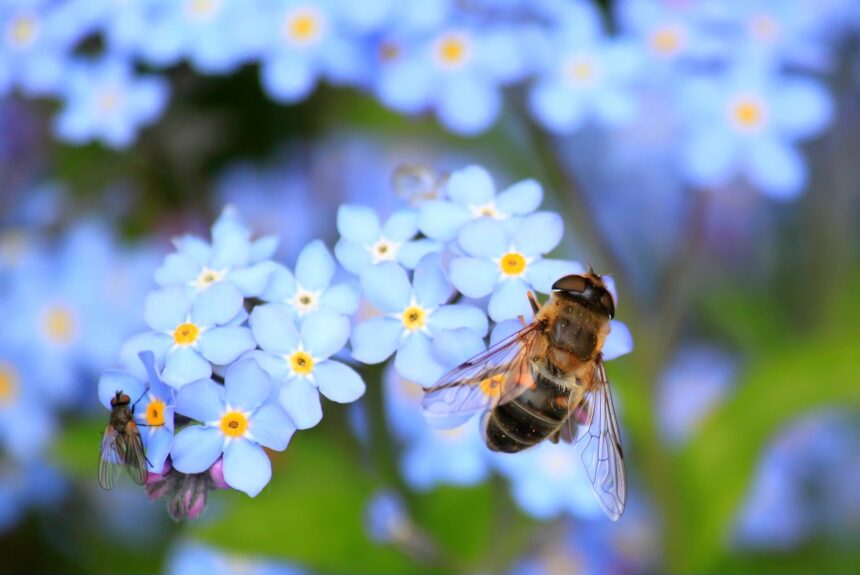Innovative technology is coming to the rescue of declining bee populations. Vital to food supplies, bee populations worldwide are rapidly declining due to disease, habitat loss, and the use of pesticides.
According to UN estimates, bees pollinate 71 of the 100 crop species that provide 90% of the world’s food. It is not just agricultural crops that are affected but also crops such as clover and alfalfa, which are necessary for animal feed. Bee pollinated crops are believed to be valued at around $15 billion in the US, with a similar figure in Europe.
>>>READ: Robotic Agriculture Has Arrived
Recognising the scale of the problem, researchers have been exploring all aspects of bee habitation and pollination methods in order to create new cutting edge innovations.
Several companies have been investigating the structure and styling of beehives. Hiive is a German startup, which has set out to create beehives that mimic the natural shape of tree caves used by bees in the wild. Unlike traditional hives, these tree caves are conical and made from recycled plastic, hemp wool, and sawdust. The natural shape of the hive encourages the development of a colony to be more resistant to parasitic health problems and less dependent on chemicals to maintain hive health.
The natural tree cave style provides more insulation, a design that is easier for bees to heat, keeping them warmer in winter. The design also allows for beekeepers to remove honey without disturbing the bees. Prototypes are now being tested in fields, and commercial production is planned.
In Ireland, Niamh Damery, a Limerick University student has just won a James Dyson award for her novel Econooc hive made from natural materials. A segmented design, it is ideal for easy assembly and transport. What makes it particularly unusual is that the base is made from mycelium, a substance grown from mushrooms. Mycelium repels the varroa mite, a common source of viruses affecting bees. The base is shaped into the form of a tree hollow and is topped by a moulded waste plastic section complete with a landing pad and ventilation hole, as well as a clear area allowing people to watch the bees at work.
Other companies are focusing on robotic, high-tech solutions. Israeli-based Beewise has developed the world’s first solar-powered, robotic hive. A self-contained 12 square meter receptacle, the Beehome houses two million bees living in 24 separate hives. Each hive is linked to a 24-hour monitoring system complete with AI technology. It automatically dispenses sugar water and medicine in real time, helping to keep the bees healthy while reducing mortality rates. In addition, the hives are equipped with sensors constantly monitoring the health and activity of the bee colonies including providing climate and humidity control, pest control, and automated harvesting. If problems arise, the app sensors enable the beekeeper to be instantly alerted. So far, over 100 Beehomes have been set up in Israel, together with 12 in the United States.
>>>READ: Why Farmers Are Adopting Eco-Friendly Fertilizers
Tunis-based SmartBeekeeper has developed smart devices designed for beehive monitoring and tracking. Its SmartBee and SmartBee+ use sensors to measure temperature and humidity within the hive. Every six hours, the gathered data is transmitted to cloud storage for analysis undertaken via a web interface or mobile app. This enables beekeepers to optimise bee health and honey production as it identifies when hives need to be moved to new pastures. Additional sensors allow bee movements to be tracked and foraging patterns monitored using a GPS tracking system that provides theft alerts.
Hostabee is another tech-based company focusing on the development of ultra-sensitive beehive sensors. A French company backed by the European Space Agency, Hostabee installs tiny sensors within hives that transmit data by satellite from an onsite transmitter box. The sensors continually monitor humidity levels and internal temperatures. All the sensors are small enough to fit into any type or size of hive, and because they operate on radio waves, the bees are not disturbed. Data can be accessed via smartphones.
A more unusual solution is being explored in Australia where Brisbane-based artist Michael Candy has developed robotic flowers, known as the Synthetic Pollenizer. The 3D flowers modelled on rapeseed are placed among real plants in a field and contain both pollen and nectar. A mechanical network pushes the synthetic nectar to attract bees. Once they land on the flower, they pick up a carefully regulated amount of pollen. How far this concept can be taken beyond an art form is still uncertain, but it emphasises the sheer innovation and creativity that is being brough to bear on a world-wide problem.
Angela Youngman is a long established freelance journalist and author based in the UK specialising in business, sustainability, travel, tourism, leisure, food & drink.
The views and opinions expressed are those of the author’s and do not necessarily reflect the official policy or position of C3.
